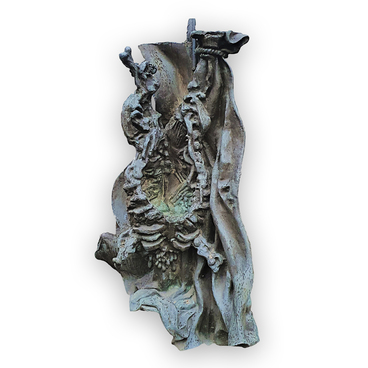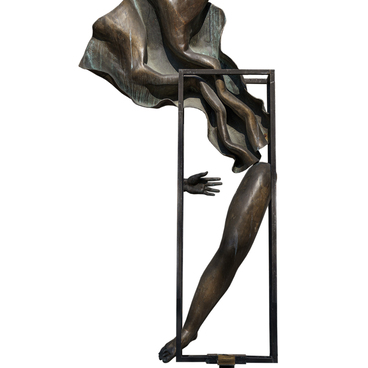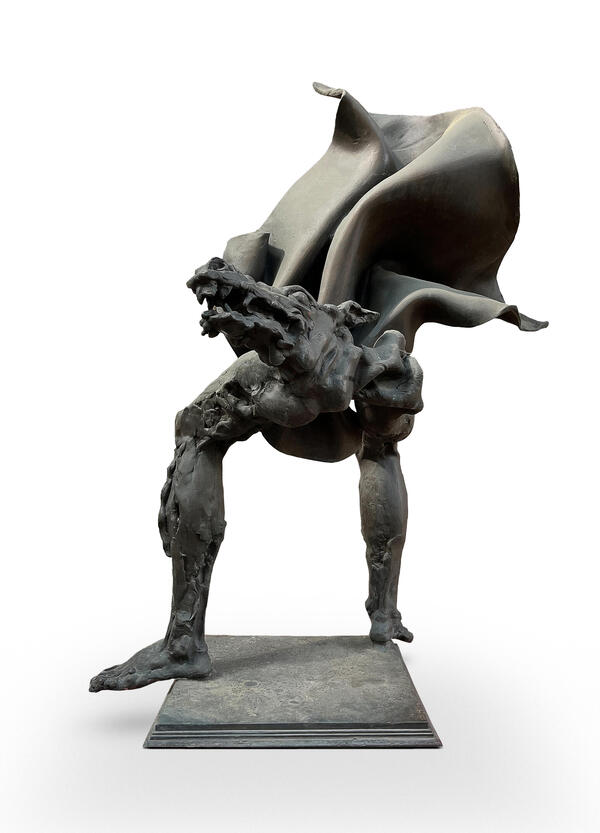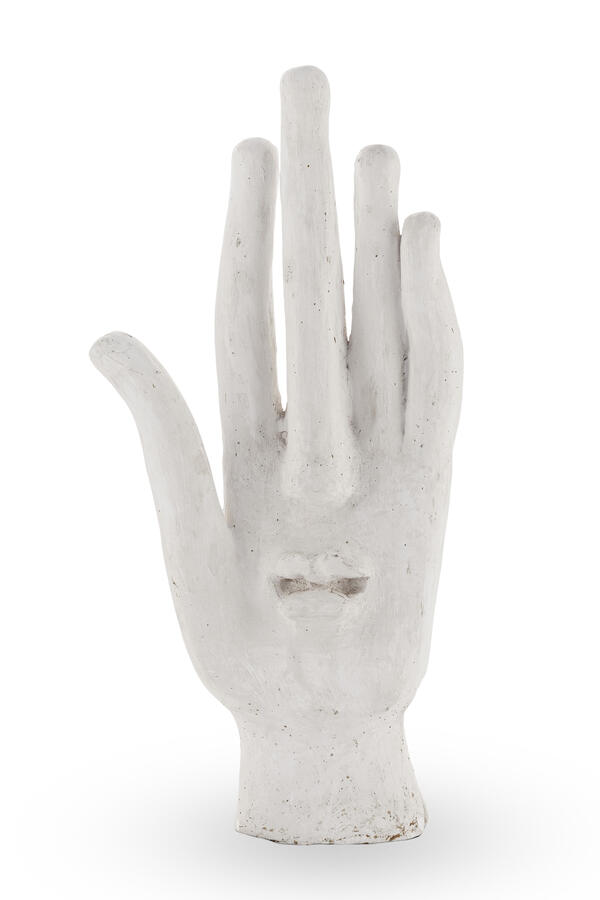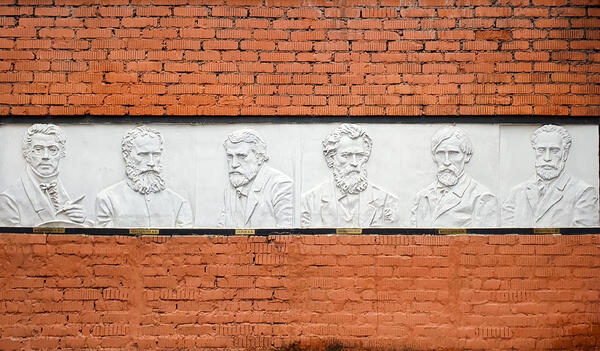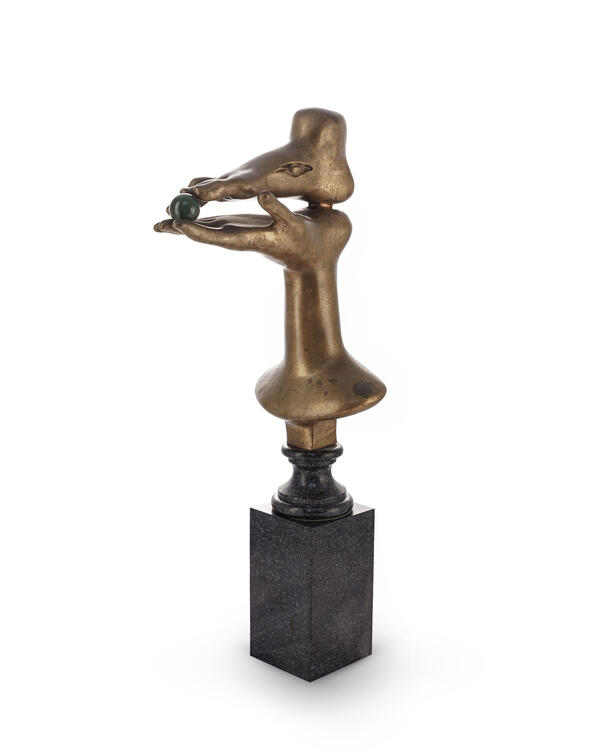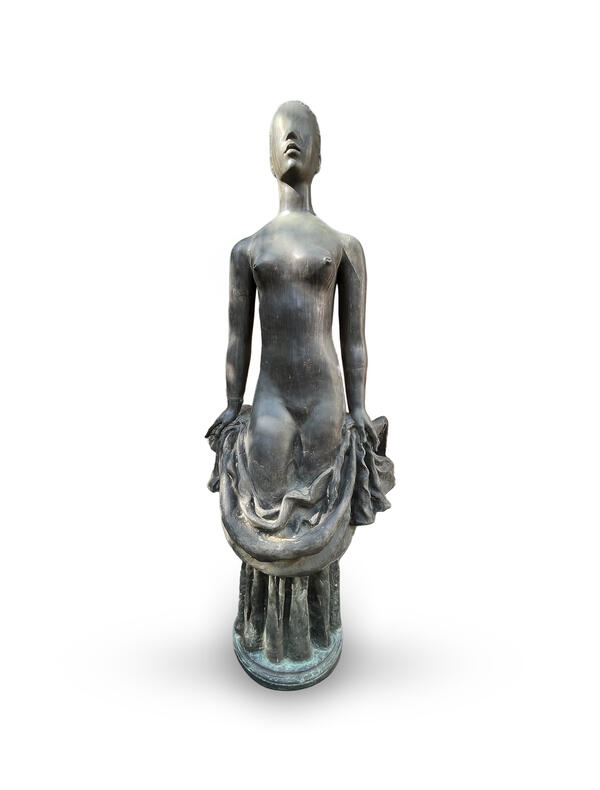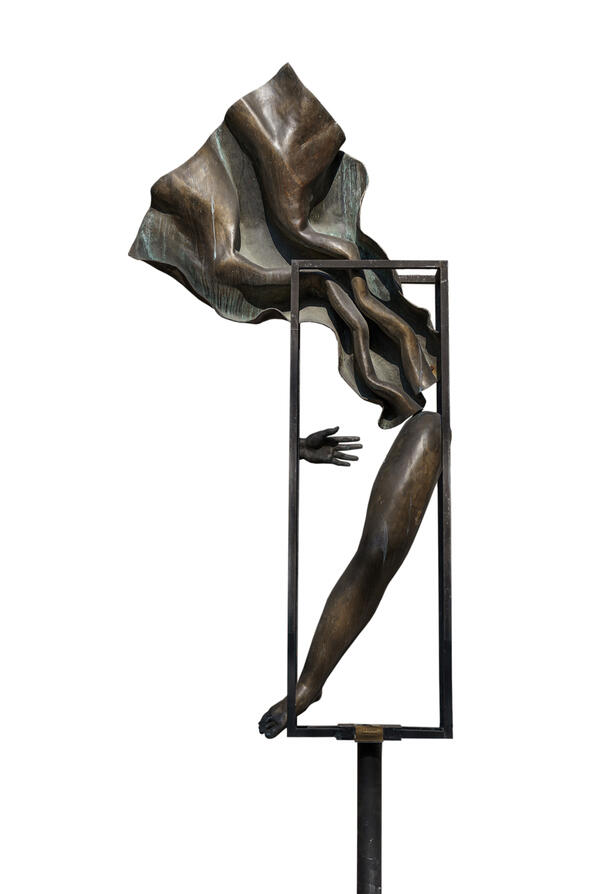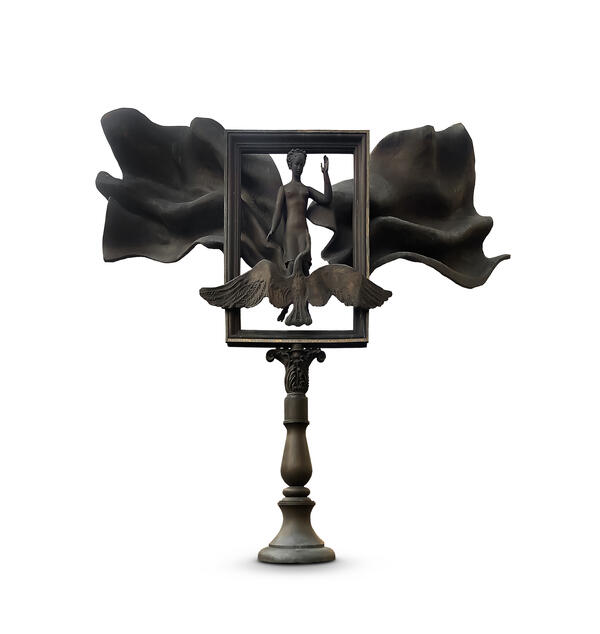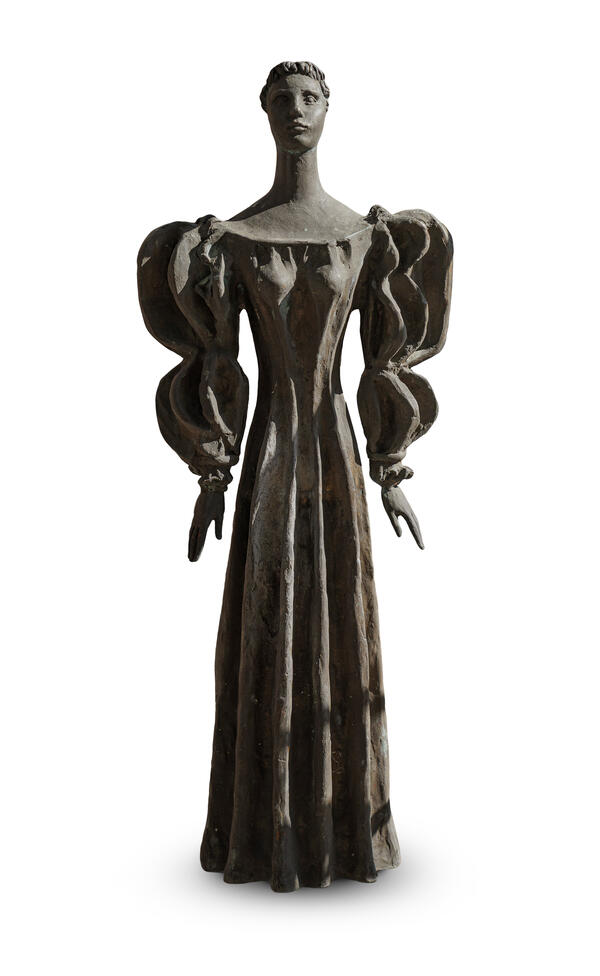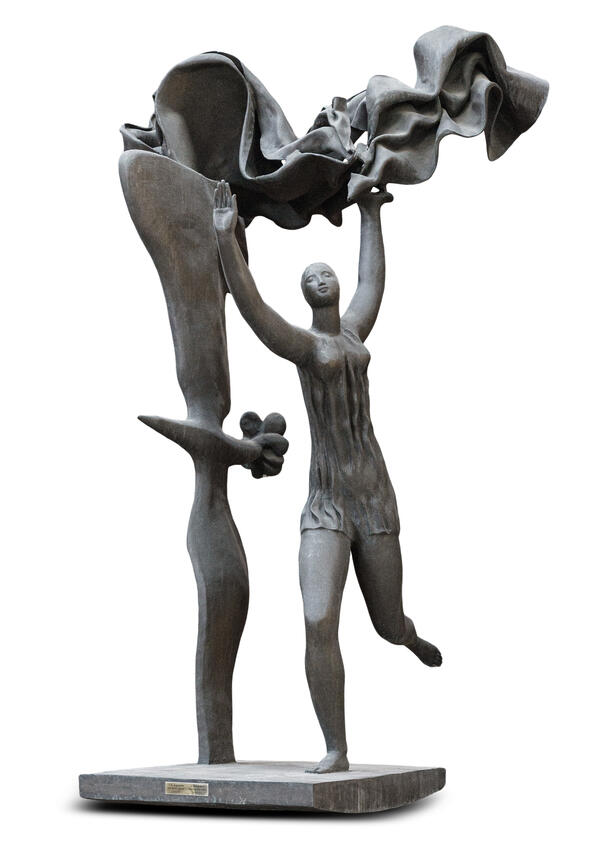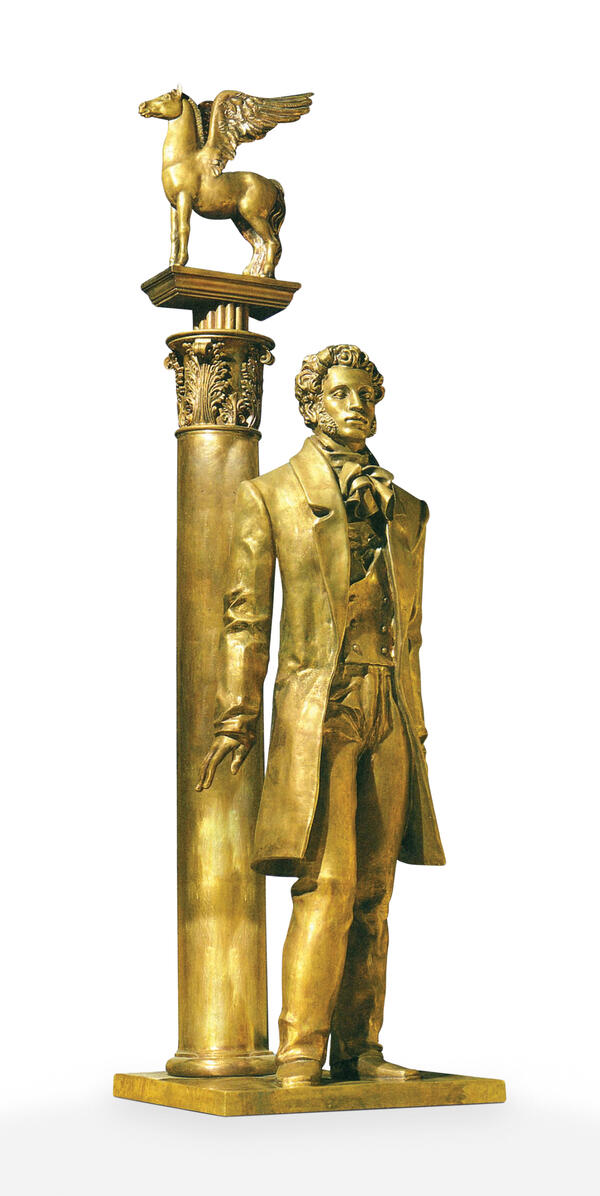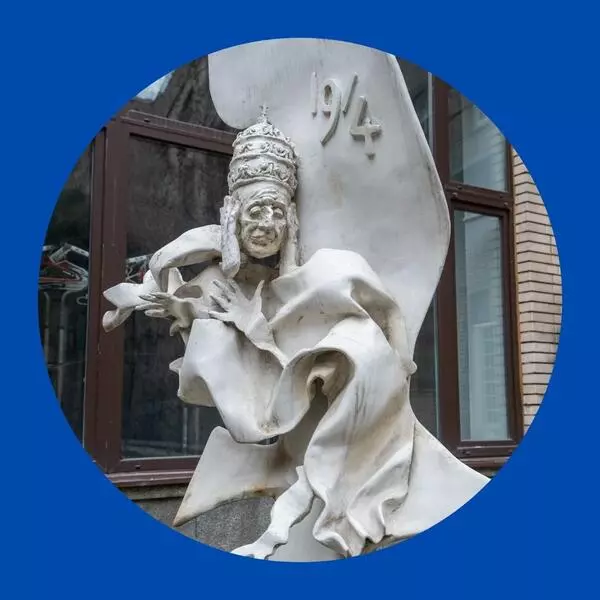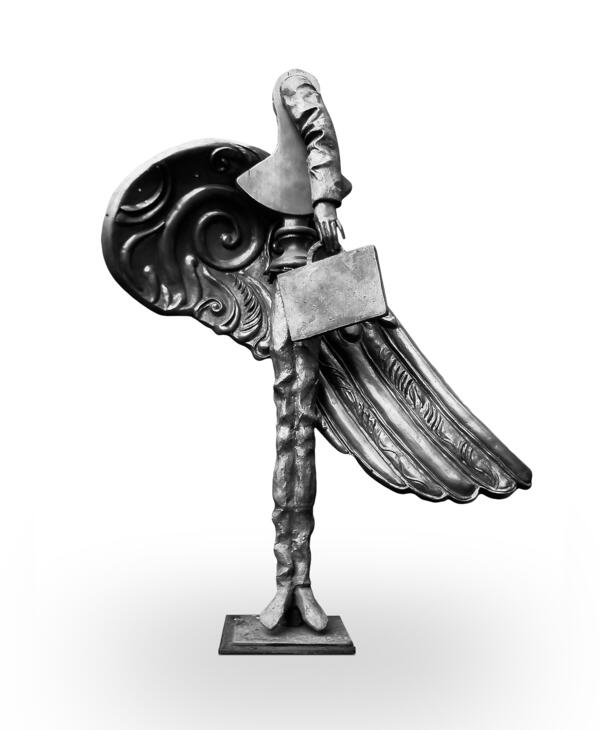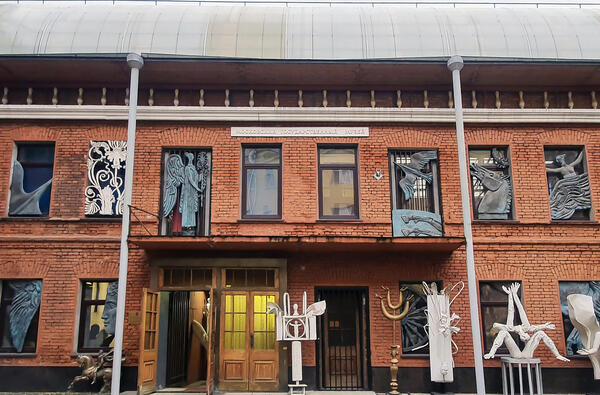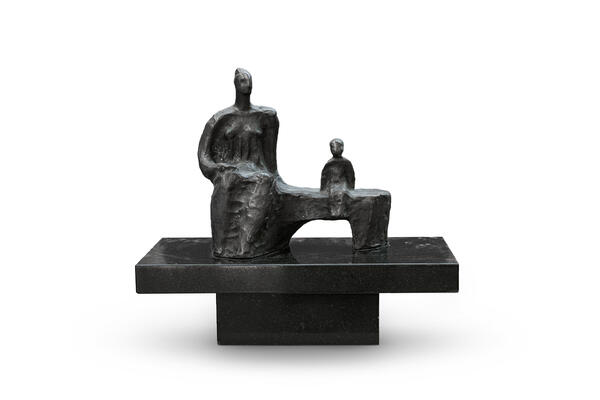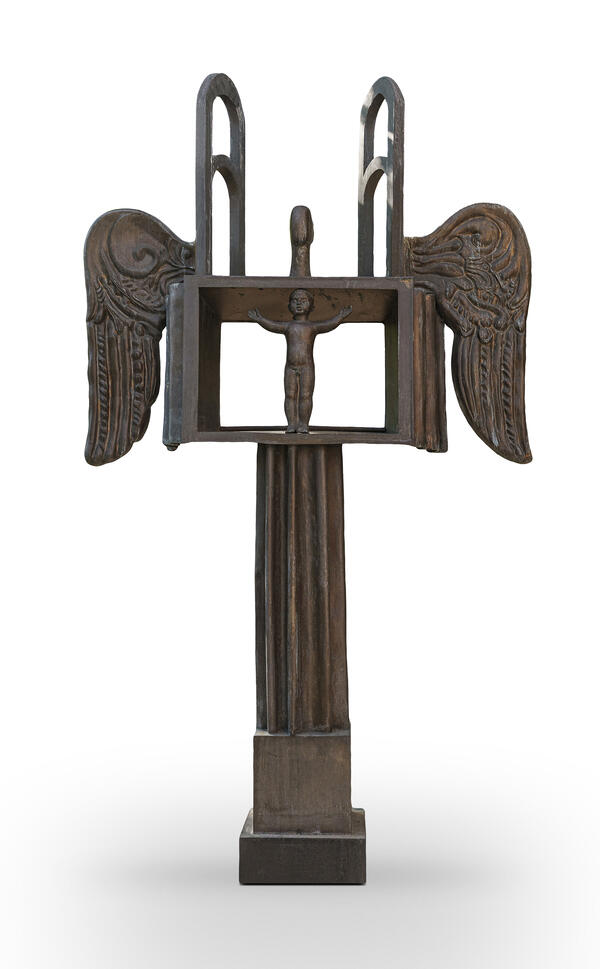The museum’s exhibition features a sculpture that symbolizes peace. It depicts a mother lifting a child who stands easily and freely on her shoulder. Next to the figures, there is a schematic industrial landscape. In this sculpture, the image of Peace is formed by motherhood, the development of a new life, calmness, and aspiration toward the future.
The composition “Peace” reflects the creative search for new forms of an entire generation of the Sixtiers. It led to the development of a new sculptural language characterized by a symbolic clarity of shapes as well as the strength and architectonics of the human body.
The new subjects and forms in art reflected relevant social challenges, the legacy of the recent Victory, heroic patriotism, and industrialization.
The composition incorporates a variety of symbols. The eternal theme of motherhood is presented in a new way. The figures of a mother and child are depicted frontally. Above them, there is a Victory Banner rippling in the wind. The composition is balanced by a schematic industrial landscape created in an openwork technique. It is placed behind the raised left hand of the woman and represents a global construction. The themes of peace, construction, and future are conveyed with concise clarity.
The sculptor reinterpreted the traditional lyrical theme of “a mother and a child” by using a generalized and minimalist approach. The majestic, free-standing figure and clear silhouette give the sculpture a sense of grandeur.
Alexander Burganov turned to the traditions of sculpture of the early Classical period when the human body was associated with geometric shapes. By building on its legacy, he interpreted the female figure. Her neck and arms are clearly based on cylinders. The lines of her body are simplified, and the smooth folds of her vestments make the slender figure resemble a fluted column.
The sculpture was created using the technique of forged copper, which was popular between the 1960s and the 1980s but is rarely used today.
Sheet copper sculpture has
been known since ancient times. It was particularly prominent during the
Hellenistic period. The process involved hammering a thin sheet of metal onto a
mold to create a shape. An example of this technique is the
Arch of the General Staff Building in St. Petersburg.

